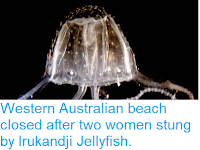Lionfish, Pterois spp.,
are large predatory Fish from the Indo-Pacific region that have become a
serious invasive pest in several other parts of the world. They are willing to take a
wide range of prey and have a novel hunting technique, hovering over the prey
fish then, disorientating the prey by flaring their large pectoral fins and
sometimes blowing jets of water at the prey prior to striking. Furthermore, Lionfish are venomous, producing a potent toxin on spines on their dorsal, anal
and pectoral fins. These adaptations make them a formidable and dangerous part of any ecosystem where they are found, and most other Fish will avoid them wherever possible.
In a paper published in the journal Coral Reefs on 31 October 2018, Davide Seveso, Simone Montano and Davide Maggioni of the Marine Research and High Education Centre on Magoodhoo Island in the Maldives, publish an account of an observed association between juvenile Emperor Red Snappers, Lutjanus sebae, and the Common Lionfish, Pterois miles, off the coast of Nosy Be Island, Madagascar.
The association was observed during a dive off Nosy Be in August 2018, during which a number of juvenile Emperor Red Snappers were seen in close association with Common Lionfish, swimming close to them, and often within their fins. Juveniles of this species often form close associations with Sea Urchins, remaining within the spines of the Echinoderms until they grow to large, and thereby gaining the benefit of the Sea Urchin's spines as a defence. In this case the Snapers appeared to be using the Lionfish in a similar way, in an environment with a sandy bottom and no Sea Urchins.
Juvenile Emperor Red Snapper next to a Common Lionfish. Seveso et al. (2018).
The benefits of this relationship to the juvenile Snappers seem fairly clear; they gain benefit from the Loinfish's defensive spines, and are in addition well camouflaged against the Lionfish, with both species having similar barred light–dark colour patterns, and may even be able to scavenge some of the Lionfish's food (both species are carnivores). However it is unclear what gain the Lionfish gets from this relationship, or if there is none why they endure the presence of the Snappers.
Juvenile Emperor Red Snapper hidden between the fins of a Common Lionfish. Seveso et al. (2018).
See also...
Follow Sciency Thoughts on Facebook.








